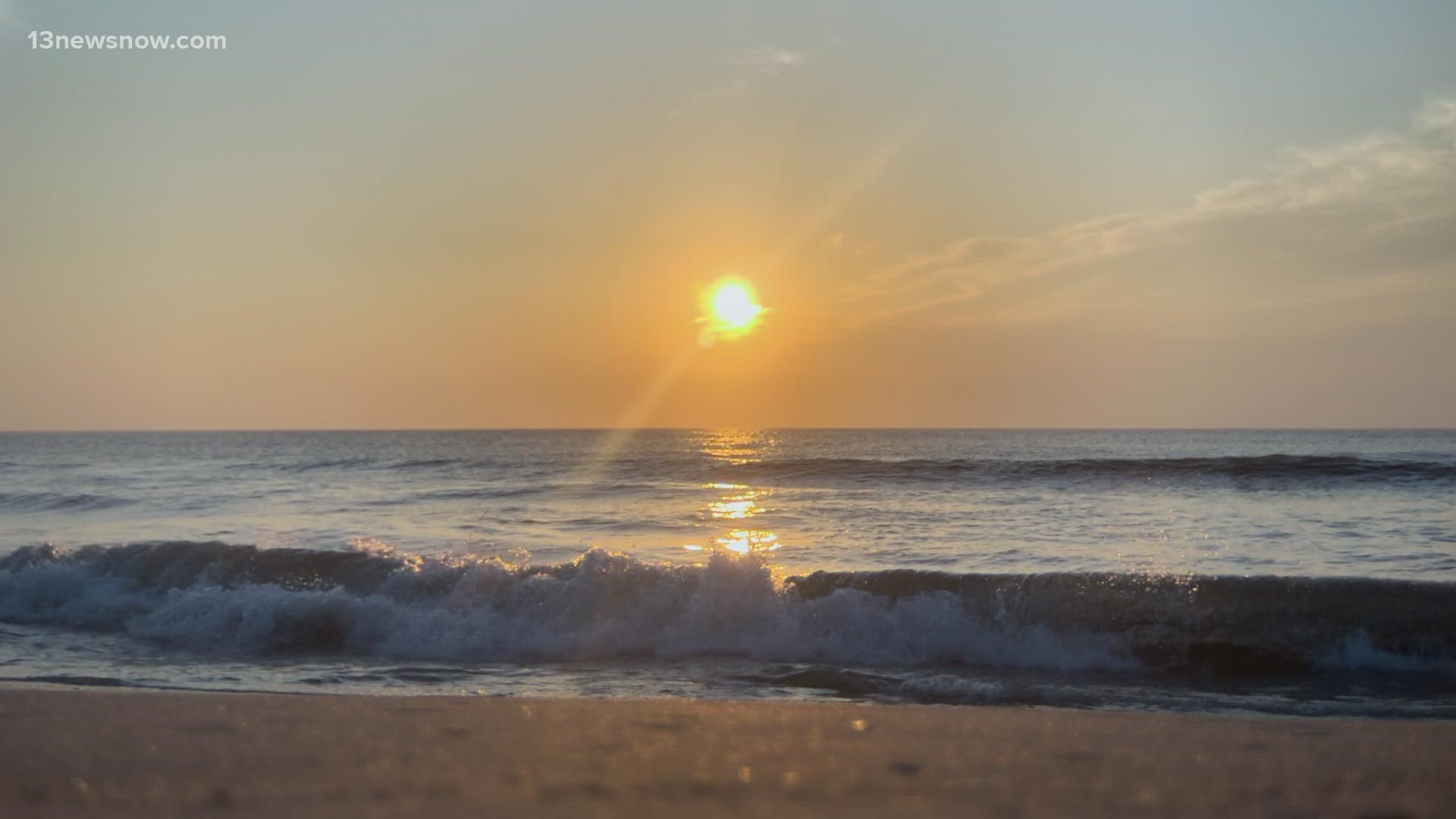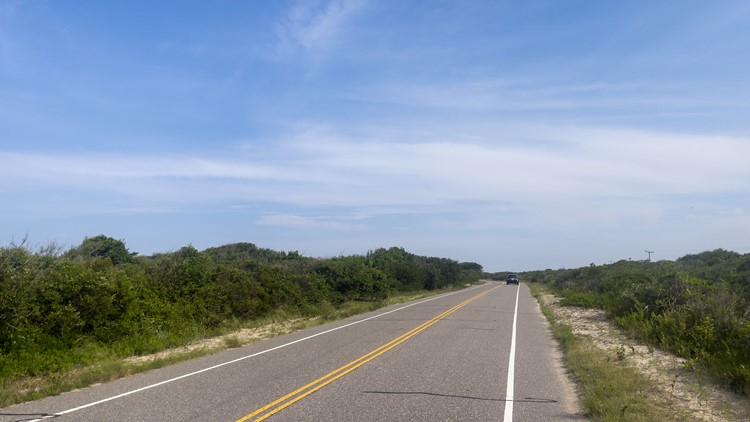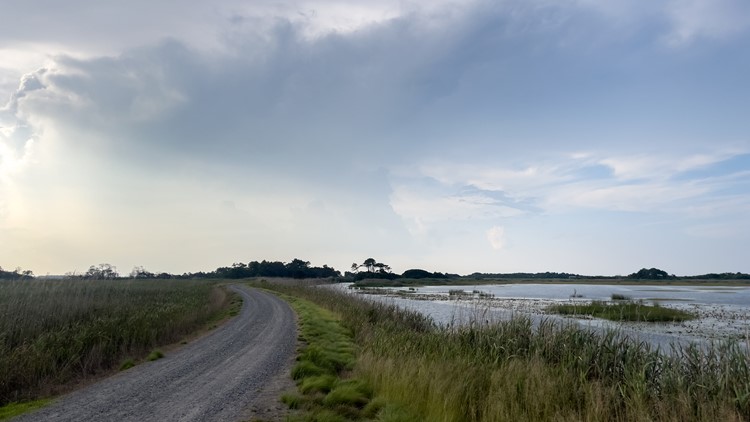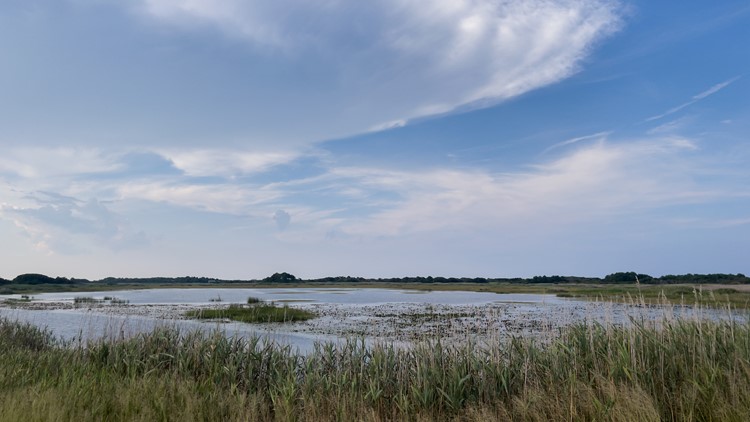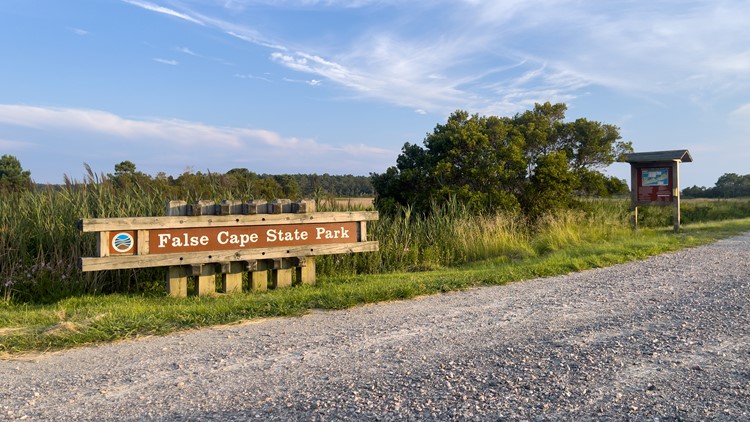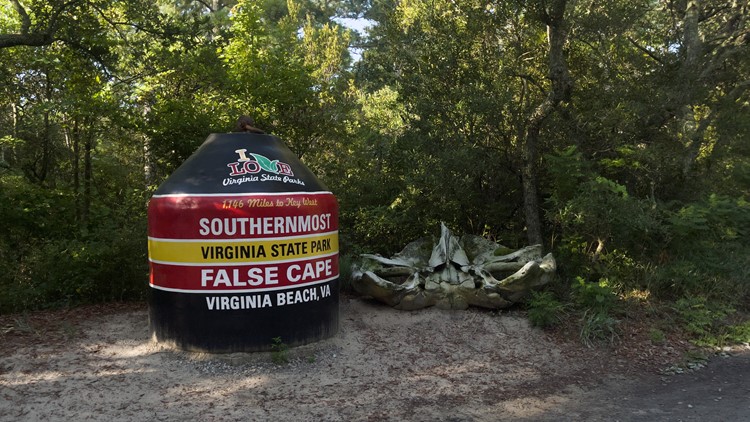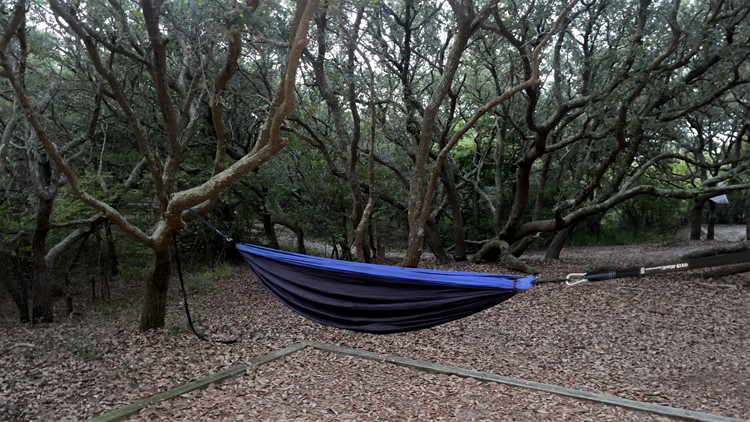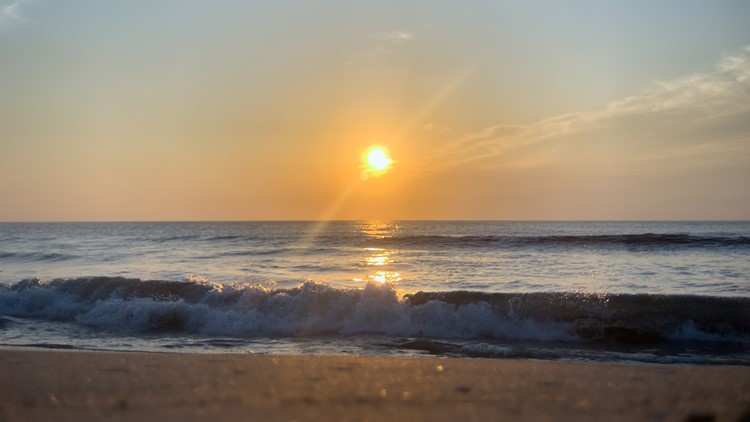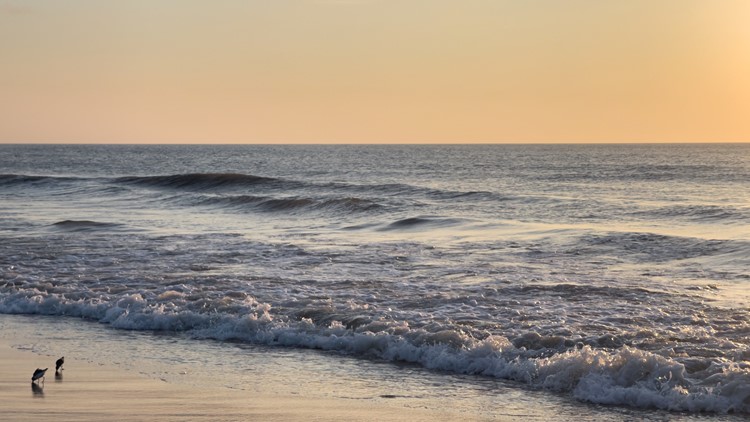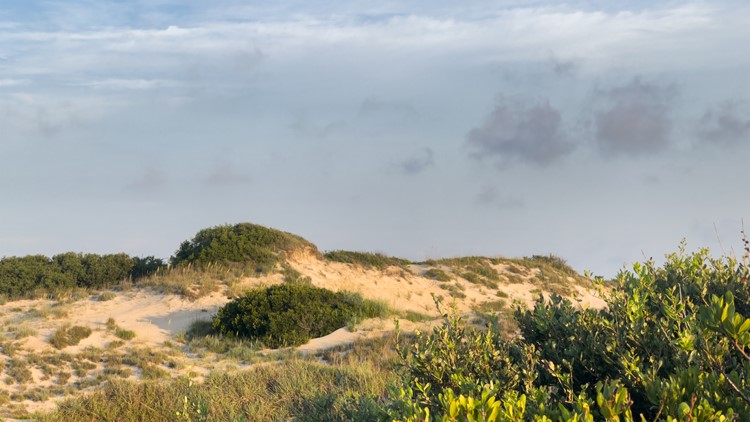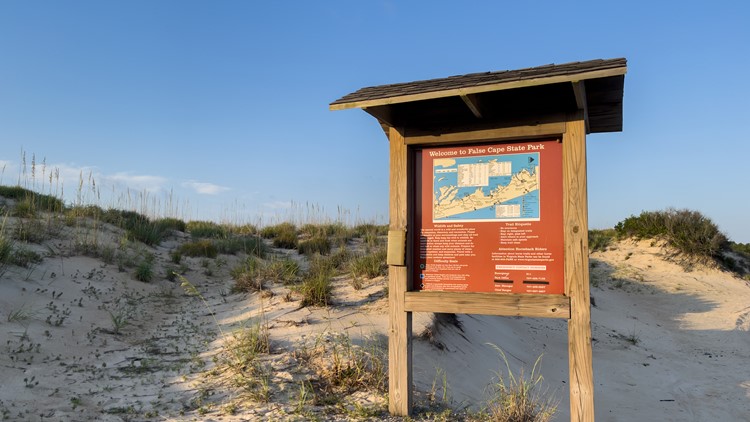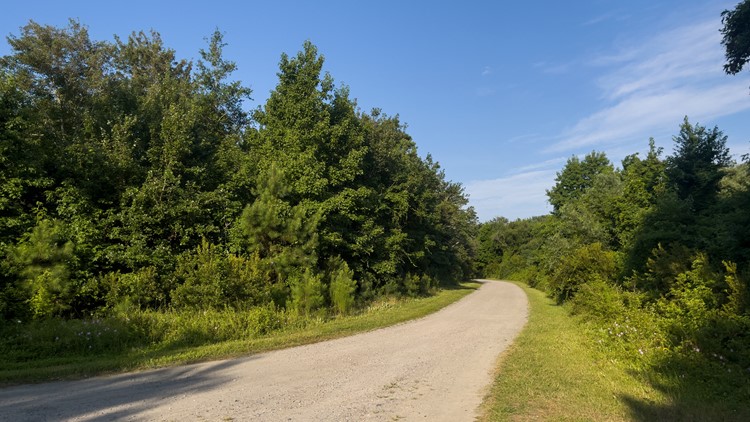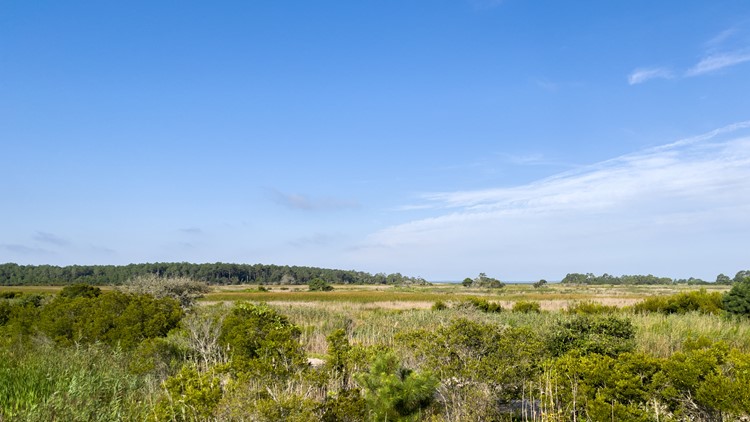VIRGINIA BEACH, Va. — Are you down to load your backpack with camping gear, throw on some hiking shoes and journey through the wilderness?
If you answered yes, False Cape State Park, located beyond the Sandbridge part of Virginia Beach, should be on your list of adventures to conquer.
The Virginia Beach state park is home to an undeveloped beach, maritime and swamp forests, wetlands and marshes. As one of the last remaining undeveloped areas along the Atlantic coast, the experience is far removed from the hustle and bustle of the city.
False Cape is a popular camping destination because of the option to pitch a tent right on the beach. This adventure is not for the faint of heart, though.
Those who want to camp at False Cape will have to trek miles through the Back Bay National Wildlife Refuge while hauling all the things you need to be off the grid. Also, the weather can be unpredictable or unfavorable. Expect to be uncomfortable.
The payoff is an epic view of the sunrise on the ocean, along with the stars at night beforehand. There's also the satisfaction of knowing you did something outside your comfort zone.
This story is a breakdown of the journey you'll take at False Cape, as well as recommendations based on my own experience on July 23 and 24, 2022.
Photos: False Cape State Park on July 23-24, 2022
What to know before you go
If you plan to camp at False Cape, make a reservation over the phone by calling (800) 933-PARK. Same-day or walk-in reservations aren't accepted.
Also, print two copies of your camping reservation before you arrive, one for your car dashboard and one for your campsite marker.
For my July 23 trip, I brought a backpack packed with all of the things I needed to stay the night: a hammock, rain tarp, blanket, toiletries, trash bag, flashlight, battery pack and first aid kit.
Most importantly, I had good sunscreen, bug spray, plenty of water to drink and food (These definitely came in handy). Since there aren't trash cans in the park, you'll have to pack out all of your trash -- so bring a bag.
To reach False Cape, you have a few options: hike or bike, which are both free through the Back Bay National Wildlife Refuge. You can also take a kayak or canoe, but this is only recommended for experienced boaters.
First step: Hike over 6 miles through the Back Bay National Wildlife Refuge
If you decide to hike as I did, the journey begins at Little Island Park in Sandbridge, where overnight campers at False Cape are required to park since it's not allowed at the Back Bay visitor center.
From Little Island Park, you'll walk over a mile south along Sandpiper Road to reach the Back Bay visitor center. If you need a breather, the visitor center area is a good spot.
From the visitor center, you can take the interior East Dike and West Dike trails (either one is open between Mar. 31 and Nov. 1) or the refuge's beach to reach the state park.
I took the West Dike Trail, (East Dike was closed,) to the Barbour Hill oceanside campsite at False Cape. From the parking lot to the campsite, the hike was 6.7 miles long, according to a Google Maps measurement.
When walking along the West Dike Trail, note how vast the landscape is. The wetlands will be your immediate surroundings, but you'll see the forests towering off in the distance.
It's worth mentioning that you won't have a lot of shade until you briefly walk through the forest. Again, bring plenty of water and sunscreen.
During your hike, a park ranger may drive by, check in with you and point you in the right direction.
After walking along the West Dike Trail for just over three miles, you should come upon the first sign for False Cape, which means you're leaving the wildlife refuge.
You can either turn right at the first sign or go down further and turn right onto the Marsh Ridge Trail. Both trails will take you to the False Cape State Park visitor center and the park's campsites.
If you think six miles is long, remember you'll have to hike that same distance back.
Some options: Camp on the beach or under the trees
False Cape's campsites are in four separate areas far apart: Barbour Hill Bay, Barbour Hill Ocean, False Cape Landing Bay and False Cape Landing Ocean.
Those who reserved an ocean campsite can either set up at the designated campsite under the trees or in a designated area right on the beach. Since I used my hammock, I camped under the trees, but the beach was a short walk away.
After the sunset, there was a nice breeze along the beach and a clear view of the night sky. There was some rainy weather off in the distance, but luckily, Mother Nature spared me and my neighboring campers.
The best part of this trip was watching the sunrise on the ocean. I was jealous of the campers right on the beach, because they could wake up and watch the sunrise from the comfort of their tents. But the short walk from my hammock wasn't bad.
The downside of the sunrise, at least in the summer months, is that it gets hot outside quickly. This meant I had to hit the trails and make my way back to where I started.
My recommendations for the best trip
Overall, if you're looking to go off the grid, False Cape is a great place to hike and camp, but it will be challenging.
As I said before, bring all the things you'll need to be off the grid: water, snacks, sunscreen, bug spray, etc. Luckily, the Barbour Hill campsites have drinking water available -- just bring something to fill up.
Next time, I'll go when the weather is cooler since it was hot and humid. I'd also bring an actual tent so I could camp on the beach.
I'd also recommend bringing swim trunks and a towel for the beach. I didn't bring my stuff to swim, but it would have been nice, considering the temperature outside.
I wouldn't recommend this camping trip for inexperienced hikers because of its length and remoteness. If you don't have a ton of hiking experience, you risk becoming tired along the way, and it's a long way back.
Park Manager Cameron Swain recommended the park's other programs, including the tram tours through the Back Bay and False Cape, kayak tours and night hikes. She also shared several tips to make the most out of it:
- Always be prepared and look at the weather before heading out.
- Have bug spray, sunscreen, good shoes and plenty of drinking water.
- Dress accordingly to the weather. Wear a hat when it's hot.
- Call the park ahead of time to check on certain conditions, including the biting insects.
- Get to the park on bike so you can cover more ground. Spend at least a day to get the full experience.

